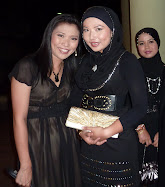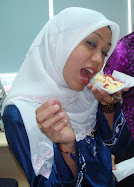Exams ended a little over a week ago, quite a bit later than usual. With the Hari Raya holiday moving 12 days earlier each year, the semester calendars change and we get moving dates for registration, mid-term breaks, and exams. With such a late end to this semester, the next one will begin later than usual also.
| Exam Hall |
Final exams for the program in which I teach are prepared by the parent body, a local Malaysian university that continues to do things the old-fashioned way, despite having a modern term in the university name. As such, the final exam counts for 60% of the class mark, and final exams are given in a large auditorium with walking proctors and strict control procedures.
| Crowded Work Space |
I wish I could say that the strict control procedures meant for high-quality exams, but that is not the case. Even though the parent body insists that all exam questions are sent to external examiners for quality verification, egregious errors are all too common on exam questions. As proctors, we have to inform the parent body representative of the errors and allow him or her to make a decision as to how to inform the students in answering the questions.
| Confiscate Crib Sheets from the Toilet |
On one exam that I proctored, an electrical engineering question (give in both English and Malay) had different values. In English, the values were something like this:
Voltage = 12V
Current = 2.0A
Resistance = 30 Ohms
Efficiency = 75%
The same question, in Malay, had these values:
Voltage = 15V
Current = 1.5A
Resistance = 40 Ohms
Efficiency = 85%
Since it is the same question, just in a different language, the answer will depend upon set of values you choose! It is clear that exam preparers do NOT proof-read their questions, nor are the external quality control examiners on the ball either.
One of my subjects has errors every semester on the questions. Typically, a parent body coordinator (who prepares the exam) will photocopy a diagram from a book -e.g., the one entitled 2500 Solved Problems in Hydraulics and Fluid Mechanics- and then write a question that goes with the diagram. Several times now, the diagram shows oil (specific gravity 0.85) flowing in a pipe. The question written out by the coordinator starts out, "Water flows in a pipe...." So, which is it? One semester, 50% of the questions were thrown out by the coordinator and not graded after I pointed out the errors on two and a half of the five questions.
| Stamp the Date |
As a proctor, in addition to finding this semester's set of errors, we walk around and watch students. One task for me is to go into the Men's Bathroom after about 10 minutes and confiscate the crib sheets that are inevitably hiding in the water tank of the bathroom stalls. Students haven't figured out yet that water causes ink and pencil to smear and disappear.
Another main task is to give students additional paper upon which to do calculations or answer questions. Each piece of paper has to be stamped with the current date so as to insure that the paper was not brought into the exam hall by the student.
But, exams are over now and we are enjoying our Monsoon Vacation.





